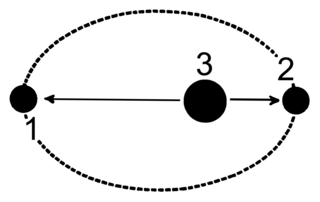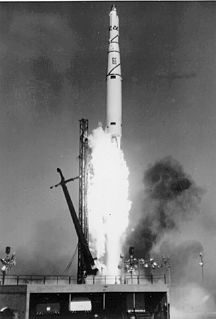| Mission type | Optical reconnaissance |
|---|---|
| Operator | US Air Force/NRO |
| Harvard designation | 1961 Alpha Beta 1 |
| COSPAR ID | 1961-026A |
| SATCAT no. | 00186 |
| Mission duration | 2 days |
| Spacecraft properties | |
| Spacecraft type | KH-3 Corona''' |
| Bus | Agena-B |
| Manufacturer | Lockheed |
| Launch mass | 1,150 kilograms (2,540 lb) |
| Start of mission | |
| Launch date | 17 September 1961, 21:00 UTC |
| Rocket | Thor DM-21 Agena-B 324 |
| Launch site | Vandenberg LC-75-1-1 |
| End of mission | |
| Decay date | 26 October 1961 |
| Orbital parameters | |
| Reference system | Geocentric |
| Regime | Low Earth |
| Perigee altitude | 233 kilometers (145 mi) |
| Apogee altitude | 380 kilometers (240 mi) |
| Inclination | 82.7 degrees |
| Period | 90.7 minutes |

Discoverer 31, also known as Corona 9024, was an American optical reconnaissance satellite which was launched in 1961. It was a KH-3 Corona''' satellite, based on an Agena-B. [1]

The United States of America (USA), commonly known as the United States or America, is a country comprising 50 states, a federal district, five major self-governing territories, and various possessions. At 3.8 million square miles, the United States is the world's third or fourth largest country by total area and is slightly smaller than the entire continent of Europe. With a population of over 327 million people, the U.S. is the third most populous country. The capital is Washington, D.C., and the most populous city is New York City. Most of the country is located contiguously in North America between Canada and Mexico.

A reconnaissance satellite or intelligence satellite is an Earth observation satellite or communications satellite deployed for military or intelligence applications.

The Corona program was a series of American strategic reconnaissance satellites produced and operated by the Central Intelligence Agency Directorate of Science & Technology with substantial assistance from the U.S. Air Force. The Corona satellites were used for photographic surveillance of the Soviet Union (USSR), the People's Republic of China, and other areas beginning in June 1959 and ending in May 1972.
The launch of Discoverer 31 occurred at 21:00 UTC on 17 September 1961. A Thor DM-21 Agena-B rocket was used, flying from Launch Complex 75-1-1 at the Vandenberg Air Force Base. [2] Upon successfully reaching orbit, it was assigned the Harvard designation 1961 Alpha Beta 1.

Thor-Agena was a series of orbital launch vehicles. The rockets used Thor first stages and Agena second stages. They are thus cousins of the more-famous Thor-Deltas, which founded the Delta rocket family. The first attempted launch of a Thor-Agena was in January 1959. The first successful launch was on February 28, 1959, launching Discoverer 1.

Vandenberg Air Force Base is a United States Air Force Base 9.2 miles (14.8 km) northwest of Lompoc, California. It is under the jurisdiction of the 30th Space Wing, Air Force Space Command (AFSPC).
Discoverer 31 was operated in a low Earth orbit, with a perigee of 233 kilometres (145 mi), an apogee of 380 kilometres (240 mi), 82.7 degrees of inclination, and a period of 90.7 minutes. [3] The satellite had a mass of 1,150 kilograms (2,540 lb), [4] and was equipped with a panoramic camera with a focal length of 61 centimetres (24 in), which had a maximum resolution of 7.6 metres (25 ft). [5] Images were recorded onto 70-millimeter (2.8 in) film, and were to have been returned in a Satellite Recovery Vehicle. The Satellite Recovery Vehicle carried aboard Discoverer 31 was SRV-552. During the spacecraft's thirty-third orbit, the attitude control and power systems malfunctioned, and as a result Discoverer 31 was unable to complete its mission or return images. [4] [6] It decayed from orbit on 26 October 1961. [3]

A low Earth orbit (LEO) is an Earth-centered orbit with an altitude of 2,000 km (1,200 mi) or less, or with at least 11.25 periods per day and an eccentricity less than 0.25. Most of the manmade objects in outer space are in LEO.

Apsis denotes either of the two extreme points in the orbit of a planetary body about its primary body. The plural term, "apsides," usually implies both apsis points ; apsides can also refer to the distance of the extreme range of an object orbiting a host body. For example, the apsides of Earth's orbit of the Sun are two: the apsis for Earth's farthest point from the Sun, dubbed the aphelion; and the apsis for Earth's nearest point, the perihelion. .

The orbital period is the time a given astronomical object takes to complete one orbit around another object, and applies in astronomy usually to planets or asteroids orbiting the Sun, moons orbiting planets, exoplanets orbiting other stars, or binary stars.
